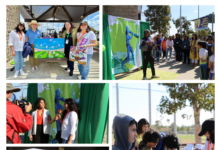Alyssa Krueger
CHICAGO: Wrightwood 659, the Chicago art space devoted to presenting socially engaged art and architecture, will reopen with an exhibition devoted to the work of visionary Indian architect, urban planner and teacher Balkrishna Doshi. Recipient of the 2018 Pritzker Architecture Prize,
Doshi, born 1927 in Pune worked with both Le Corbusier and Louis Kahn in the 1950s, and later adapted the principles and forms of modernism he absorbed from these experiences into his work with local cultures, traditions, and environments, from low-cost housing and academic institutions, to urban planning projects. In so doing, he both redefined modern Indian architecture and shaped new generations of architects.
Balkrishna Doshi: Architecture for the People is on view at Wrightwood 659 from September 9 through December 12, 2020. This international traveling exhibition was organized by Vitra Design Museum and the Wüstenrot Foundation, in cooperation with the Vastushilpa Foundation.
Jim McDonough, Executive Director of Alphawood Foundation Chicago, the exhibition sponsor, states, “The values inherent to Balkrishna Doshi’s work—inclusiveness and a deep respect for the those who live, work, or study in his buildings—are particularly resonant today, when issues of justice and equity are at the forefront of global consciousness. These are values Alphawood Foundation seeks to promote in all we do, and we are therefore delighted to bring Doshi’s work to Wrightwood 659 in Chicago. We are also grateful to Vitra Design Museum and the Wüstenrot Foundation for helping us bring this remarkable exhibition to North America for the first time.”
The Exhibition is organized around four primary themes central to Doshi’s work, demonstrating his ongoing dedication to architecture as a civic practice. Focusing on some 20 of the architect’s most significant projects dating from 1958 to 2014, the exhibition brings together full-scale models which vividly convey the physical experience of Doshi’s buildings, along with a wealth of material from the architect’s archive and studio, including drawings and models, artworks, sketches, videos, photography, and more. Exhibition-related films will be available on the Wrightwood 659 website.
The thematic sections are Home and Identity, Creating a Livable City, Shaping an Integrated EducationFinally, “Building Academic Institutions” explores a few of the many institutional buildings Doshi has designed in the last 60 years.
Another milestone in Doshi’s institutional architecture is his own studio, Sangath, in Ahmedabad (1980). Memories of his childhood home and of Le Corbusier’s studio in Paris are fused in this building’s vocabulary of spaces. “Sangath” means “moving together” in Gujarati, and today three generations of Doshi’s family work side by side here. As with all of his buildings, landscape, climate, and purpose are all integral to his design. Surrounded by Ahmedabad’s new high-rises and its elevated metro line, Sangath stands as an oasis within the bustling city.
Wrightwood 659 is a private, non-collecting institution devoted to socially engaged art and architecture. Located in Chicago’s Lincoln Park neighborhood, the intimate space officially opened in late 2018 and presents two public exhibitions annually. Wrightwood 659 was designed by Pritzker Prize-winning architect Tadao Ando, who transformed a 1920s building with his signature concrete forms and poetic treatment of natural light.







